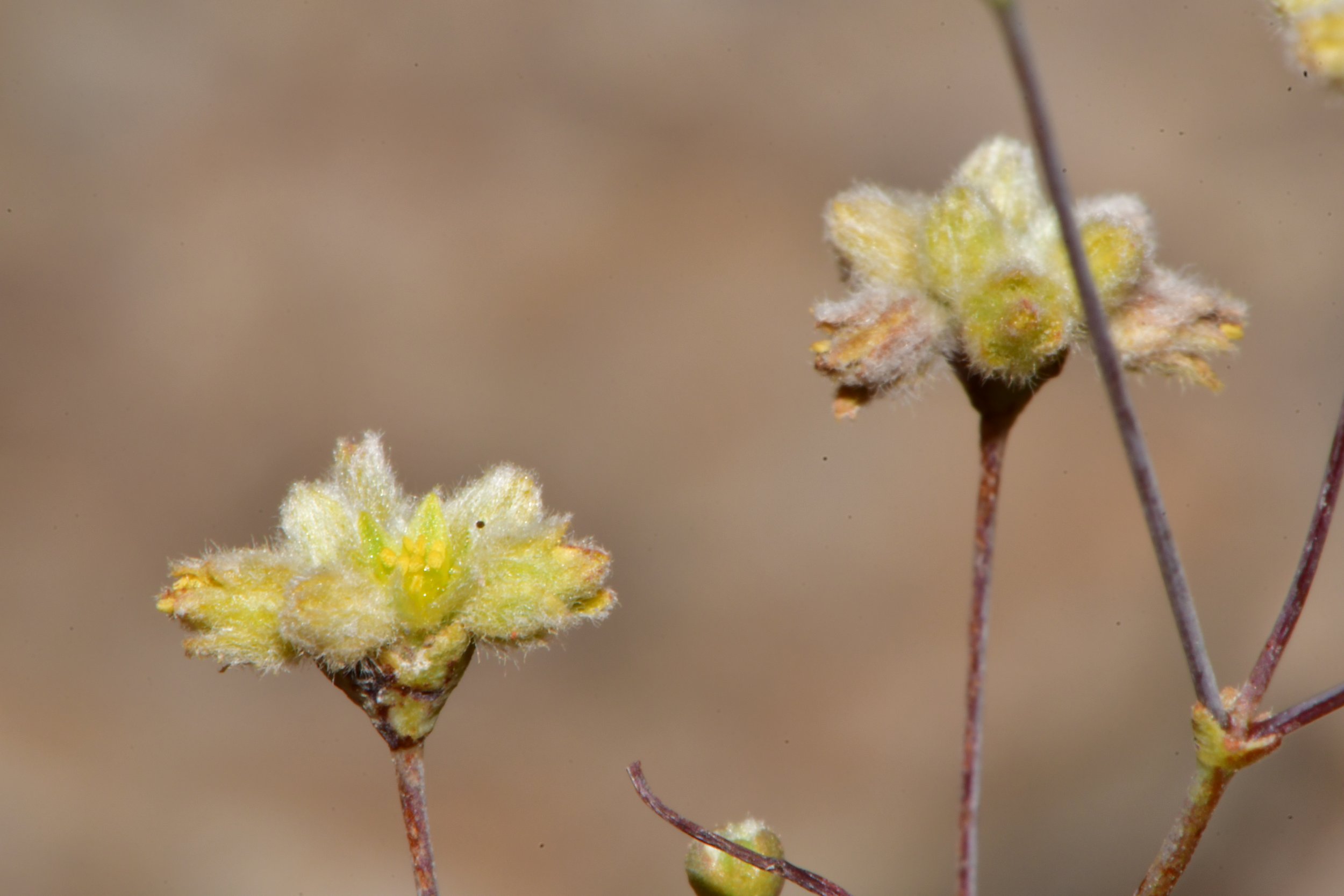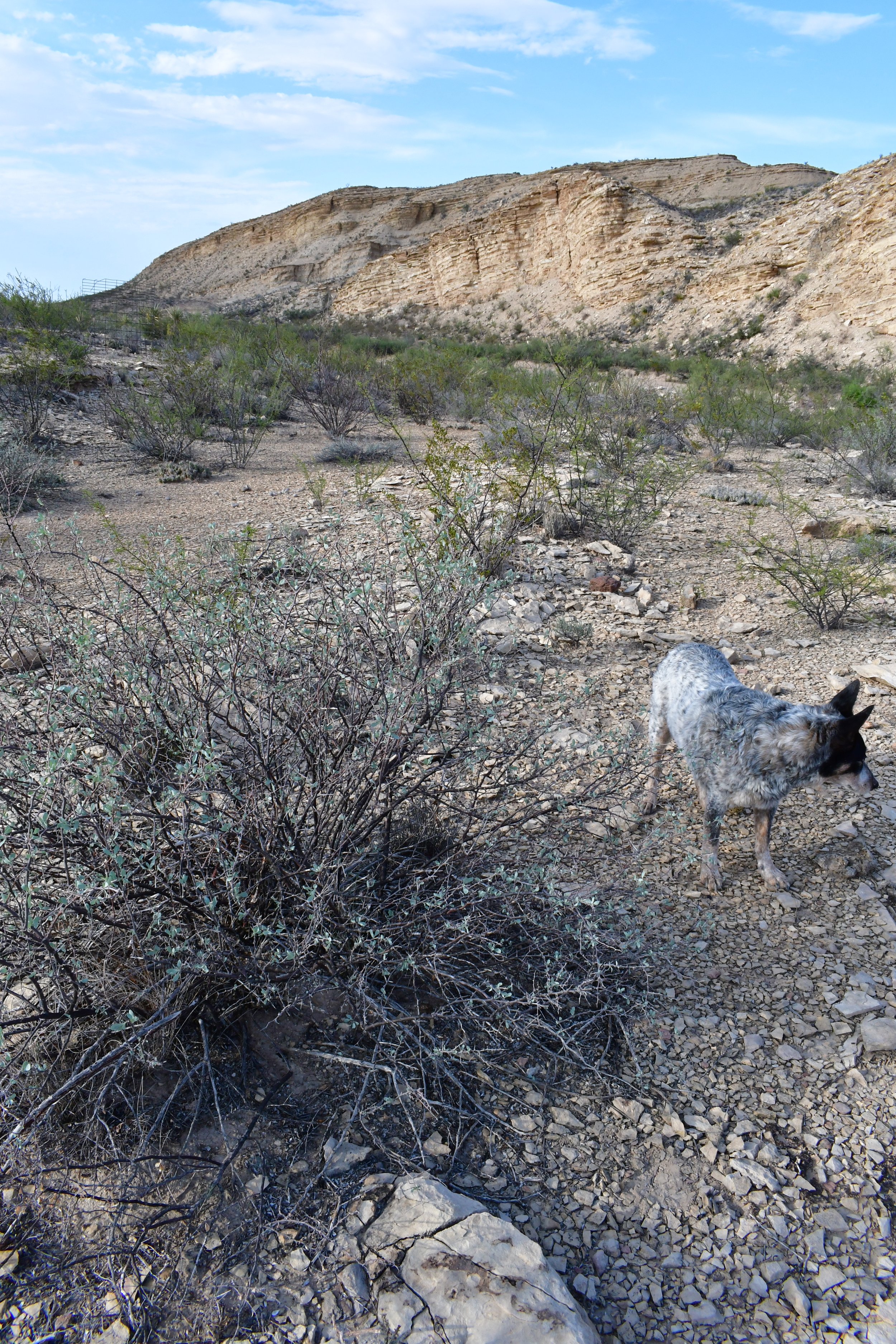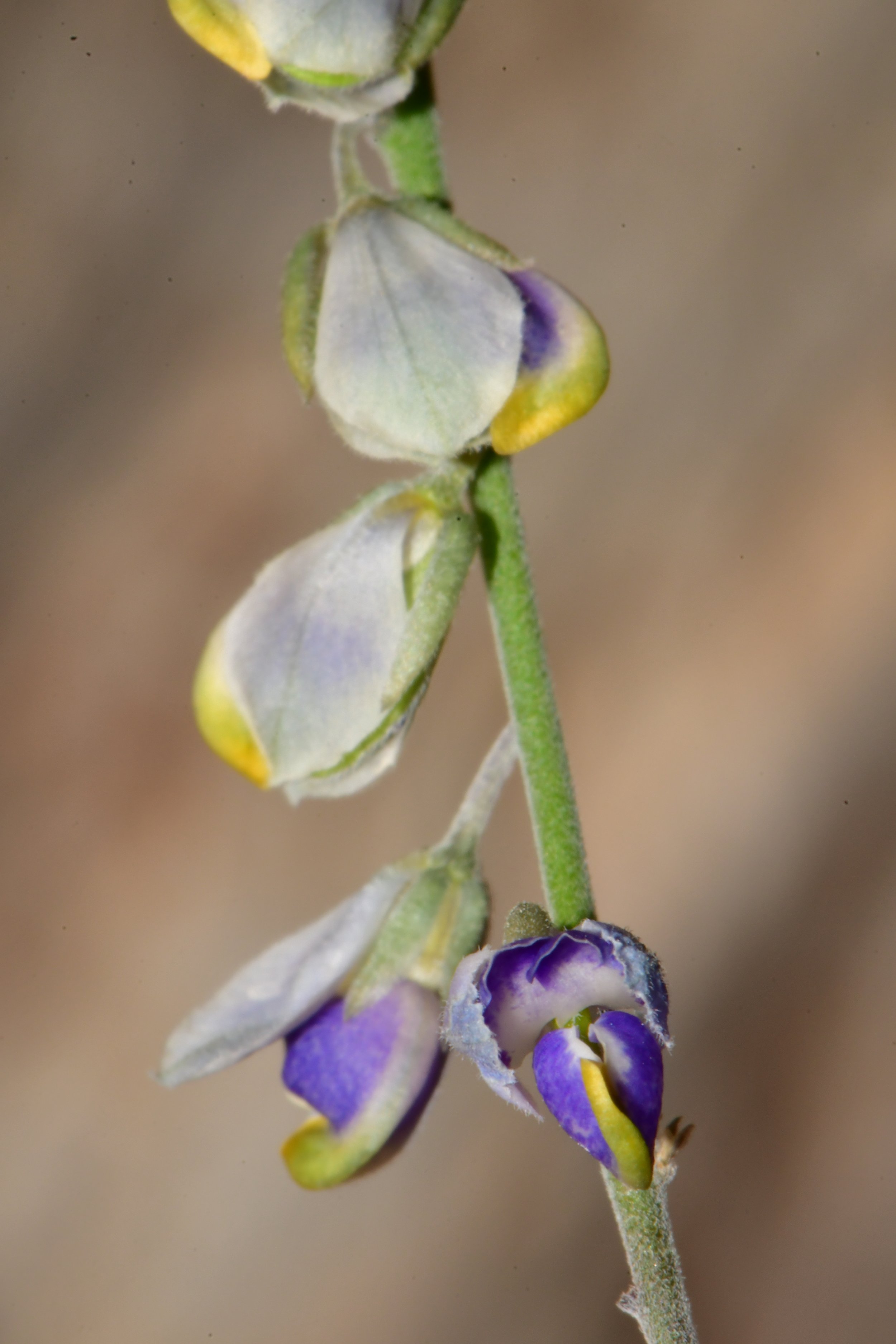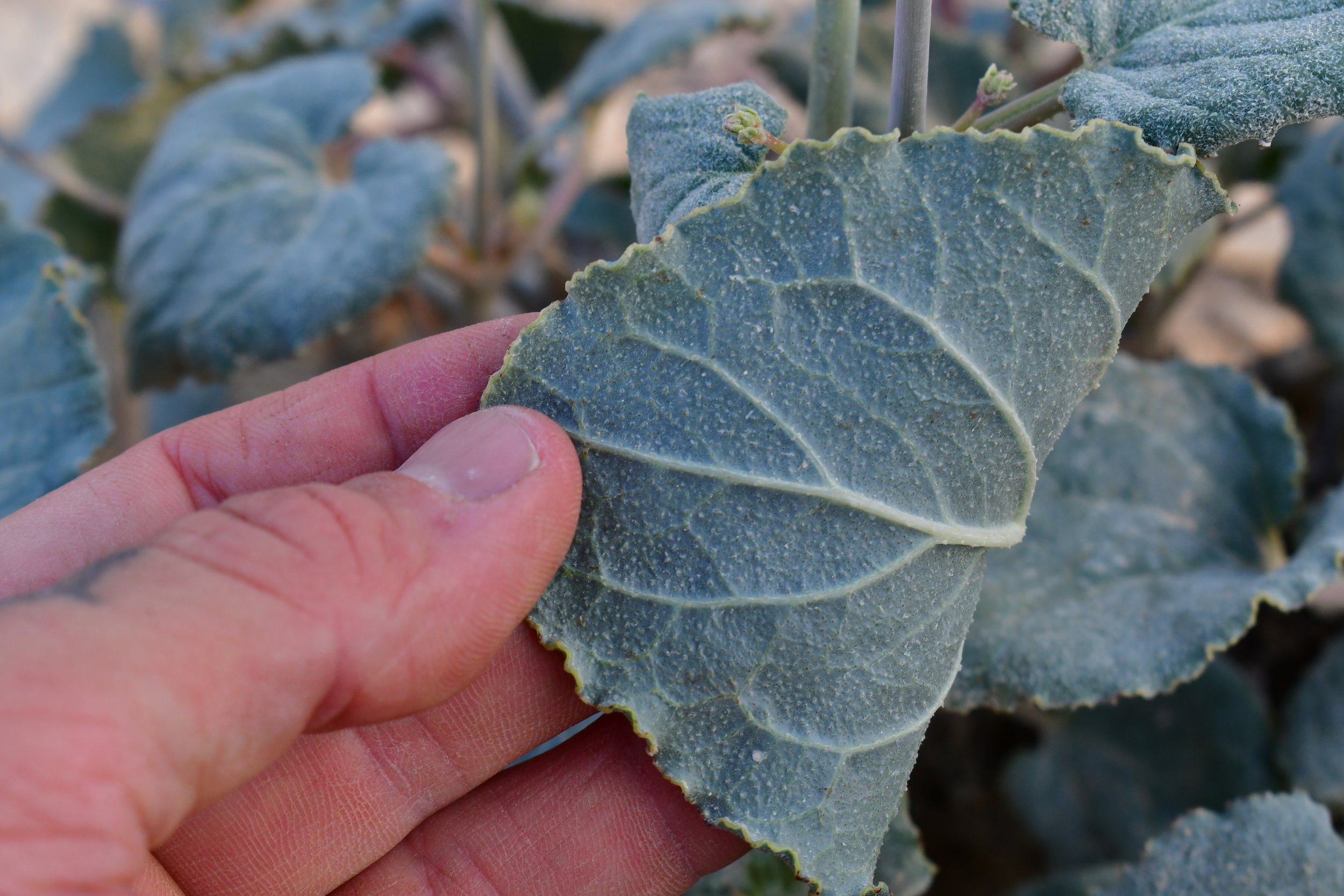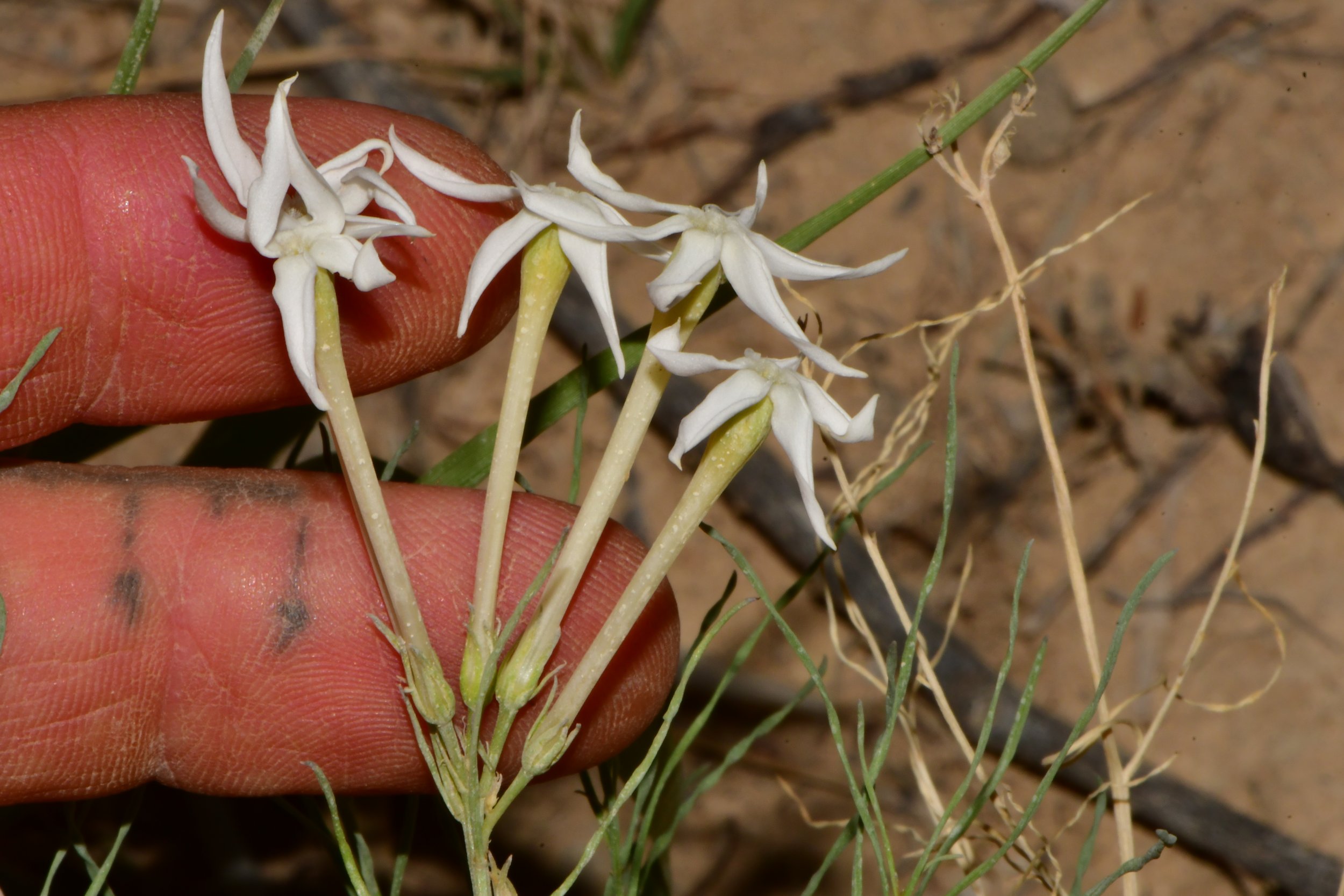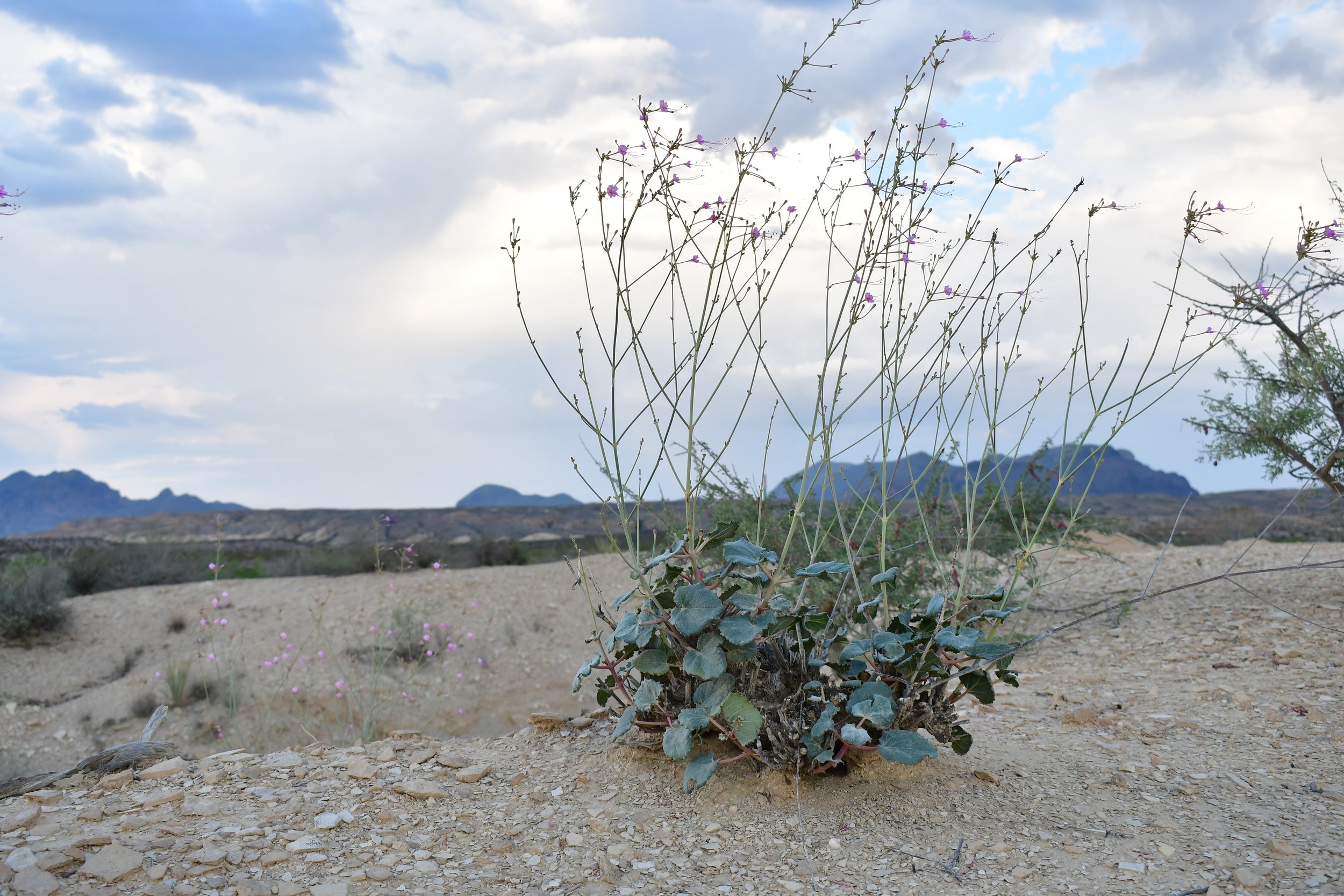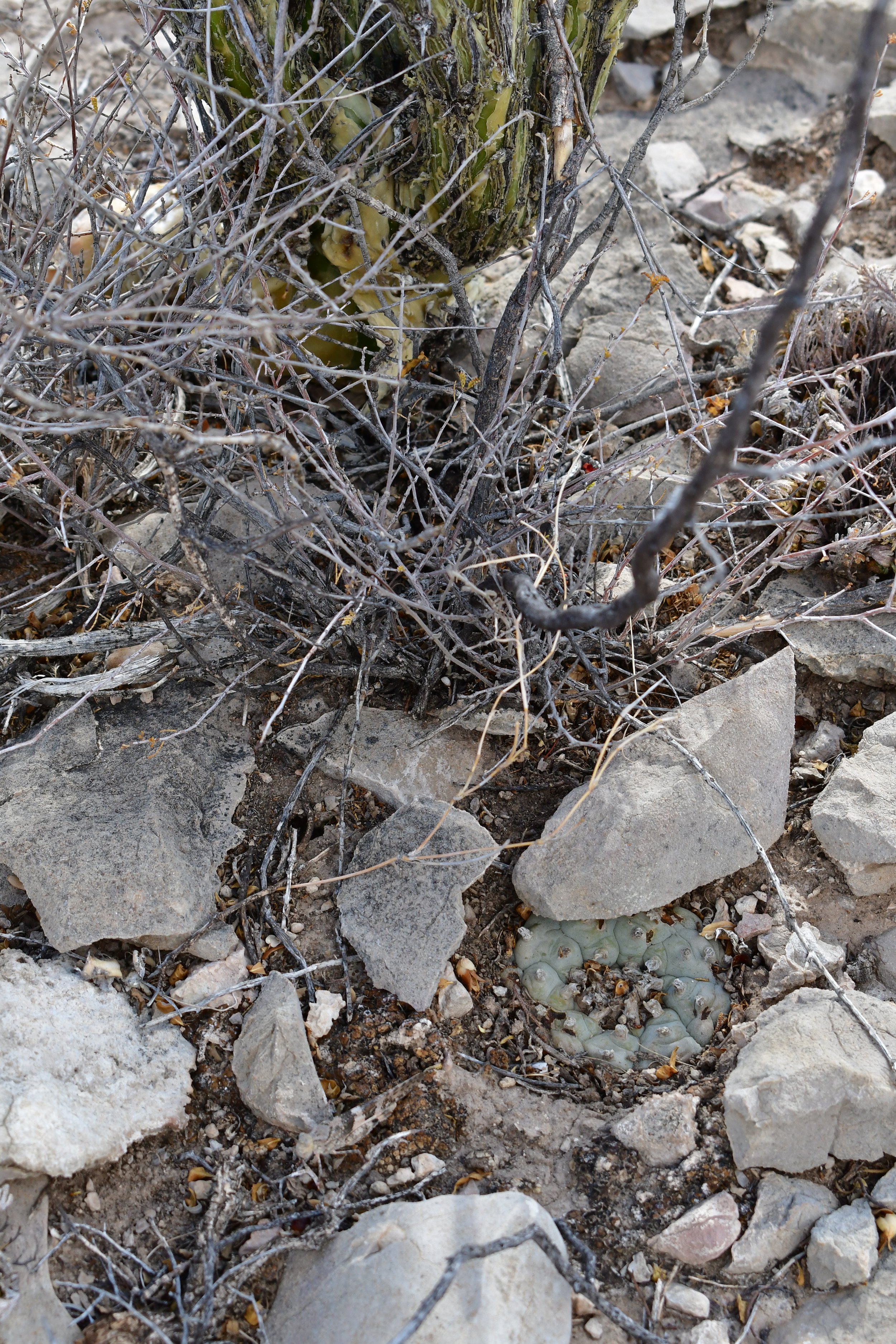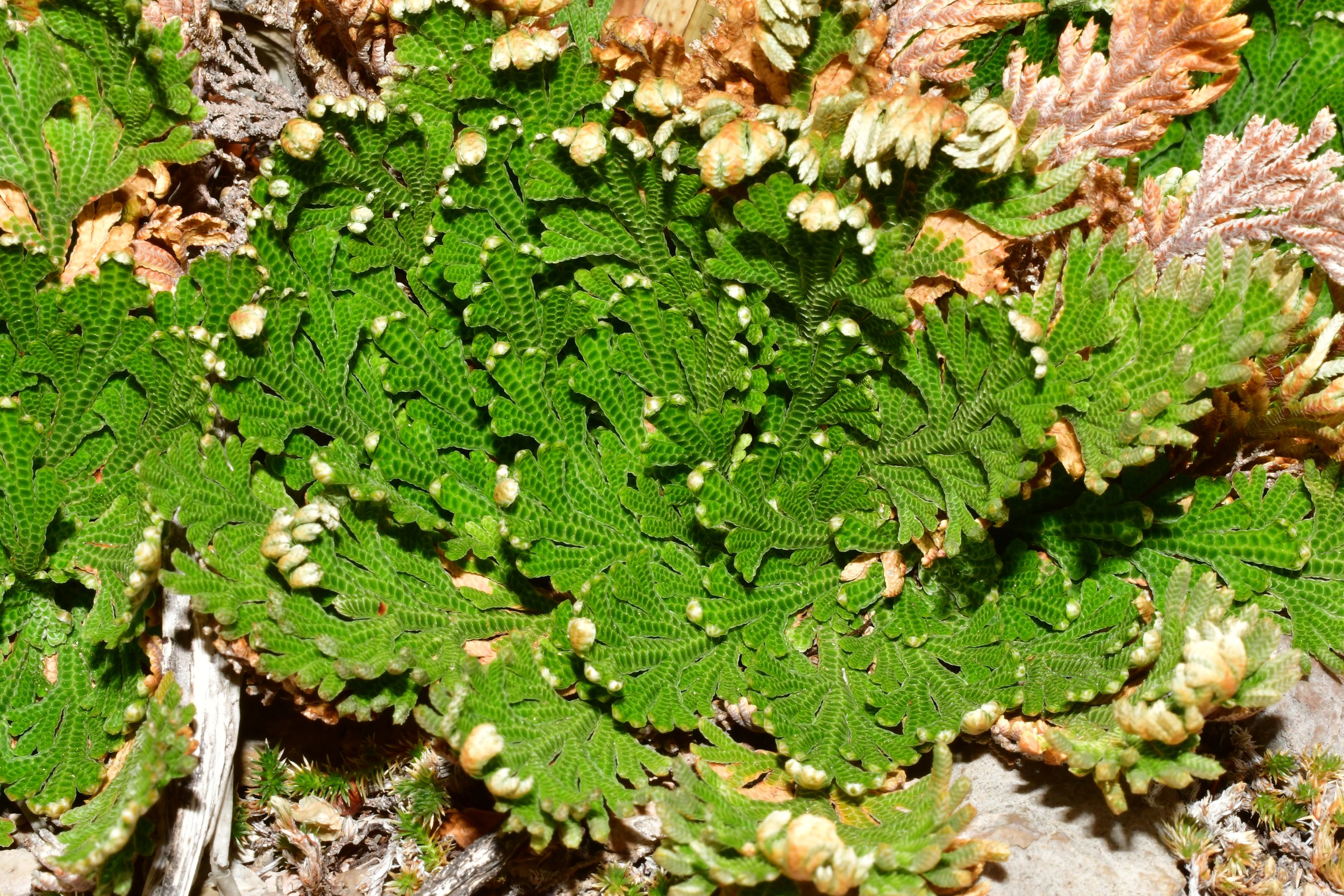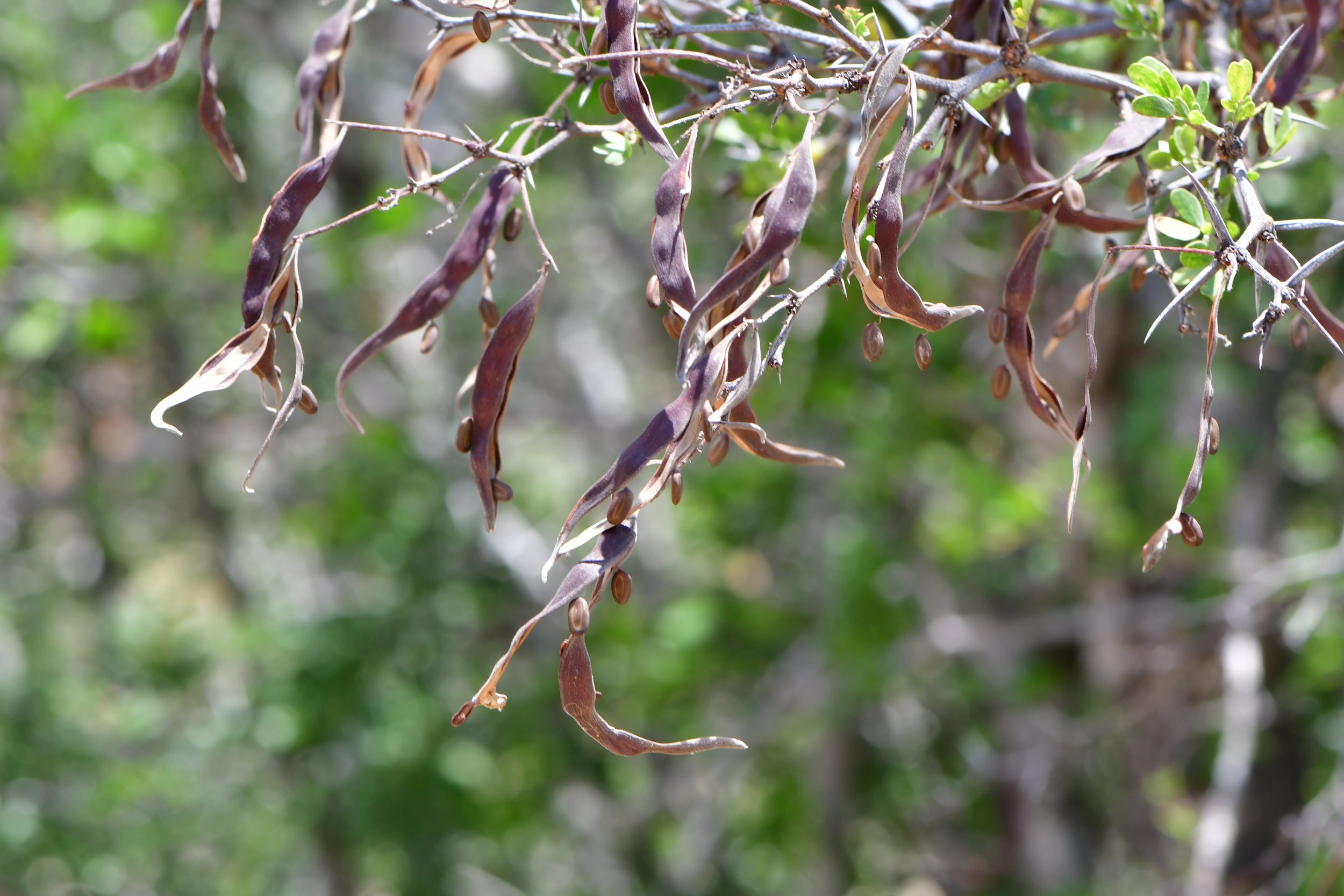“Conservation biology =eugenics. Really?”
This being America in the 21st Century, there is no shortage of epically ridiculous things that people have said (or especially tweeted) and belched forth into the ether. This take - “Conservation biology was born from Eugenics” - muttered from a mouthpiece that looks like the kind of person whose style of dress would serve as an automatic red flag that rent in the neighborhood was about to go up - really tops the list of “stupid shit that I have heard this week” (nowhere close to the infamous "Taxonomy is literally the history of white people stealing things” twitter quote I came across in 2021).
This take was written in response to a paper that was published entitled “Overpopulation is a Major Cause of Biodiversity Loss and Smaller Human Populations Are Necessary to Preserve What Is Left”, the abstract of which can be viewed here : https://www.sciencedirect.com/science/article/abs/pii/S0006320722001999.
And who could argue against the idea that an exponentially growing human population is a threat to the entire rest of the biosphere? It seems like such simple and easy common sense. One need not be a math wiz to see that when the population of any species on Planet Earth grows too big, it becomes a threat not only to other species in the biosphere but especially to itself - to its own health. Deer populations grow too big due to humans exterminating all the predators? The deer begin to cause the extirpation and local extinction of many of the native plant species that they must eat to survive. Eventually disease and starvation afflict the population, and the population crashes, causing unnecessary suffering on a scale that would have been impossible had a healthy population of deer been maintained. Surely one would have to be out of their right mind - or just plain ignorant on the issue - to suggest that humans can go on growing exponentially and somehow avoid damage to the rest of the biosphere as well as unnecessary suffering to themselves.
Yet this is exactly the viewpoint that I’ve unfortunately seen start to pop up on the left as of late (I would never expect the right - with their innate adherence to religious dogma, anthropocentrism and general complete ignorance of (as well as lack of respect for) science - especially natural sciences - to ever entertain the idea that too many humans could pose a threat to the rest of the biosphere, though I could indeed imagine a right-wing take on overpopulation as embodied in the lyrics to the song "Shrink” by the Dead Kennedys).
In the past few years, I have frequently shit on “woke culture”. But I have to be clear here - my use of the word “woke” is much, much different than say, a Republican senator from Missouri’s use of the word :woke”, or the way that a covertly-racist suburban father dressed in the most bland and hideous Kirkland Signature cargo shorts and polo shirt might complain about the “woke mob”. “Woke” to me doesn’t mean somebody that acknowledges racism exists, or that America has a very dark and often ingrained history of oppression/suppression/persecution of various races/ethnic groups/genders/sexual orientations. When I use the word “woke” I’m not using it do describe people who think this country needs affordable healthcare, or that industry needs to be regulated, or that gay people should have civil rights. All of that is common sense to me, and the only people who would argue against it are the kind of unenlightened, untraveled, semi-conscious halfwits who’ve never left their home town and are deftly afraid of the world as it exists beyond the 4 walls of their small-minded figurative enclave.
When I use the word “woke”, I’m instead describing a very unfortunate phenomenon that I’ve seen pop up among the left in the last fifteen years or so, a phenomenon which is a boon for the recruitment of the right-wing (one of their best recruiting tools, probably) and which only works to divide and turn people away from the core ideas of the left. It is a phenomenon that goes hand in hand with the opportunities for showboating and public performance that social media provides.
“Woke culture” to me describes a kind of short-sighted cultural phenomenon that thinks that morally lecturing and speaking down to (mostly all online rather than in person, of course) - anybody who’s not 100% in agreement with your political take - is an effective strategy for changing people’s minds and changing culture. But woke-ism has not changed the culture. Woke-ism has instead turned many people off from core leftist ideas (like affordable & universal healthcare, or funding public education, or creating opportunities for equity). All woke-ism has done is create a culture dedicated to fear and shame, where those within the ranks who might otherwise possess highly-intellectual and critical minds capable of great ideas towards the advancement of leftist ideas and towards the advancement of humanity in general are afraid to break ranks with the herd for fear of being called out on twitter as morally and ethically inferior or guilty. This kind of “online activism” likely feels good, but in the end all you’ve done is create a culture of sycophants who all parrot the same talking points out of fear of being attacked publicly online. How is THIS any different than what the right has done? Well, for one, the right doesn’t waste time constantly shitting on and attacking each other. I guess they have that going for them.
Woke Culture has infused leftism with the kind of obnoxious, lecturing moral superiority that is an automatic turn-off to the people that need to hear it the most. It has become directly equivalent to old-school evangelical Christian proselytizing, yet nobody who participates in it would seemingly ever have the self-awareness to be able to see this or especially acknowledge it. Right-wing, left-wing, religious or not - this is what humans often seem to do when they get on their soapbox and find some kind of self-righteous moral cause to be swept away with which they let consume them. I think the Buddhists had some kind of term for this kind of thinking, though I can’t remember what it was. I’m absolutely sure that they were as fucking annoyed by it as I am, though.
Regardless, this kind of ranting and rabidly proselytizing approach that the modern left has taken up is pleasing to the ears of those in the choir that one may be preaching to, but beyond the feeling of moral self-righteous and satisfaction it grants to those parties it does little in the way of actually changing the minds of anyone who needs to hear it. It especially fails at changing culture (at least not in the way it purportedly intends to).
Part of the reason that the hippies in the 60s and early 70s were initially so successful in changing the very stiff culture and ethos left behind by the 1950s was because they made it fun. The wokies wouldn’t know the word fun if it ran up and bit them on the ass. The wokies have painted themselves as strictly anti-fun and anti-humor. They have unknowingly painted themselves into the caricature of being the FUN COP, where every single bit of cultural minutiae has to be passed through a strict filter of moral purity and the highest level of ethical superiority. They grant nobody the benefit of the doubt, know nothing of nuance or context, and view every potential post in the comments section as an opportunity to correct or re-educate someone (often by publicly shitting on them) on their ethical flaws and ingrained personality failings. In short, the wokies generally suck. It has become a cult. And it has (very unfortunately) totally tainted and infused most facets of American leftism. It has worked so well to fracture and turn people away from the left that it almost makes one wonder if it was somehow an intentional operation initiated by infiltrators on the right.
But back to the overpopulation issue. It seems like common sense that an ideal human population on Planet Earth would be one that’s a few billion in number below what we have right now. In this way, we could prevent damage to the rest of the biosphere, we could prevent species extinctions, and we could prevent all the myriad other problems, stresses and afflictions that arise - poverty, inequality, civil unrest due to food shortages and competition for resources, plagues, etc. - from any species being unequivocally abundant in number. I should add that I don’t foresee this happening any time soon, if ever, as we are still too “un-enlightened” of a species to ever figure out a way to do this, not to mention a humane and reasonable way to achieve this such as lowering birth rates via education, women’s rights, and an increased standard of living for all. While no species has ever willfully regulated its own population by controlling growth (always instead hitting a brick wall of reality and letting catastrophe do it for them), you would think that a supposedly “higher” and more self-aware species such as humans would figure out a way to make it happen so as to avoid the inevitable consequence of diminishing the quality of its own habitat. As primates, we are still too new to this “consciousness” thing and still too far below where we need to be at intellectually and empathetically, as a culture, to ever stand a chance of reaching some kind of consensus like this anytime in the next century or two (or five).
It is estimated that at a first world standard of living a sustainable human population on Earth would be around 2 billion. Beyond that, we start to take more than the resources of Earth can give and we slowly begin to diminish the global natural resource “bank account”, eventually reaching a negative balance which will only continue to grow larger as long as the population continues to, as well. If we were willing to do away with some of the unnecessary luxuries of most first world countries, we could probably double that sustainability equivalent to 4 billion. Today, world population is an estimated 8 billion. It is projected to be 10 billion by 2050, and 13 billion by 2100. With the levels of extinction and habitat loss what they are today, how can the human species possibly exist in such large numbers without causing the inevitable decline of the rest of the biosphere? The math simply doesn’t add up.
And so what do the wokies have to say about this? The first step to addressing a problem is to admit that you indeed have a problem. But the wokies simply refuse to admit that there indeed might be a problem. It’s easier to scapegoat with an already obvious villain that - to be fair - does deserve it’s fair share of blame on the issue of ecological devastation : Capitalism. Oblivious to most issues regarding natural sciences and ecology as they are seemingly only educated in the field of social sciences, they have created a straw man : “Anybody who espouses the idea that human overpopulation is a threat to the rest of the biosphere is an advocate and supporter of eco-fascism.” Eco-fascism? Since when have the tenets of fascism (militarism, forcible suppression of opposition, belief in a natural social hierarchy, subordination of individual interests for the good of the nation, and strong regimentation of society and the economy) and the study of ecological connections within a living system of thousands of interconnected organisms ever had anything to do with each other? The idea is fucking preposterous, an oxymoron of the most ridiculous kind. But it doesn’t matter - we’ll just make it up and say that it’s a thing. And what is their proof? That some shit-for-brains white nationalist shoots up a mall somewhere and mentions “declining resources for the white race” in an online manifesto? There we have it - ecofascism.
I first saw this kind of tainted thinking arise during the start of the covid pandemic before we knew the scale of and virulence of this virus. As millions of people were forced to stay inside and business everywhere came to a halt, pollution levels decreased, smoggy skies cleared up and wild animals everywhere began to re-occupy areas where they had been excluded from due to high human populations for centuries. People began to mutter the somewhat corny phrase “the Earth is healing”, added as a caption to a photo of a whale swimming through a shipping channel that was formerly clogged with container ships. It was a corny phrase, to be taken with a grain of salt for sure, but it had a point. Most anybody who’s not a moron can take a look around at what the human species is doing here on Earth and admit that it’s - at best - a complete fucking mess. At worst, it’s a direct and existential threat to the rest of life on Earth. Something needs to change to avoid catastrophe. My vote is for our current behavior and our future birth rates, rather than our immediate population numbers, though this seems unlikely. It has been shown that birth rates automatically tend to drop once standard of living, opportunities and education go up. Boom. There’s your recipe right there. Bring people up from poverty, increase access to education, and most importantly - don’t be afraid to publicly acknowledge that too large a human population means the decline in the populations and overall welfare of the rest of the species in the biosphere. This is simple math, and it doesn’t mean that humans are an inately bad species, it just means that we have to play by the same rules as every other species in Earth’s biosphere - our numbers get too large, nature knocks us back, but not before we start to knock back the populations of all the other species in our immediate ecosystem and habitat (which in this case is the entire planet, unfortunately). To me, this just seems like common sense. Nothing is inherently offensive about it. But to the wokies (and of course all the world’s major religions, as well), this is heresy.
Never missing an opportunity to culturally re-educate the masses, the wokies stepped in. Twitter accounts of the most annoying mental brand all began parroting the word “eco-fascism”. “Humans aren’t a virus, Capitalism is a virus” they said. David Attenborough was even soon attacked as being an “eco-fascist” for the insistence in some of his BBC documentaries that human civilization itself was inadvertently causing the decline of the biosphere and the 6th mass extinction on Planet Earth.
This is where the cultural re-education comes in. Was Shel Silverstein an “eco-fascist”, too, for the controversial children’s book he published called The Giving Tree? This text clearly paints humanity as a species that takes way more than it gives. This is incorrect heresy. It seems Shel Silverstein simply never “de-colonized his mind” and educated himself on “indigenous” cultures and “indigenous" land ethics. Yes, because when we need an example of an archetype sustainable operating structure for how to run a civilization of 8 billion people without running both it and the planet it occupies into the ground, what better example to use than a pre-industrial society that probably only ever reached a population level of a few million people spread out over two giant continents? For all the beauty and reverence for non-human life forms inherent in many indigenous American cultures, we need to stop with the fetishizing of an entire race of people consisting of thousands of different tribes, each with their unique and different worldviews and belief systems. It’s gross, mildly offensive, and mentally lazy. Why not instead focus on the ideas that some of these cultures and tribes espoused rather then fetishizing them all as a caricature?
While there is undoubtedly much to say about the failures of modern capitalism to protect (or even account for) the health of the biosphere, I get uncomfortable at the idea of letting people think that is just capitalism that is the problem here, rather than a cultural worldview that would probably exist (and has existed) among the human population no matter what kind of “-ism” was in place as an operating system. The problem isn’t just “capitalism”, the problem is Anthropocentrism, an unenlightened belief that we are somehow special, that we are separate and apart from the biosphere that sustains us and therefore that we shouldn’t have to play by the same rules.
So in the wokie ethos regarding overpopulation - it isn’t real, and it doesn’t exist. It just a bunch of Malthusian “eco-fascist” nonsense meant to drum up support for a conspiratorial “eugenics program” that will one day be used to suppress populations of the poor and communities of color. While that last bit certainly seems like an agenda on the minds of more than a few on the right, the idea that there is a conspiracy among ecologists and naturalists to use overpopulation as an excuse to advance the agenda of white nationalists is a deranged and absurd strawman that simply doesn’t make any logical sense (most ecologists I know are devout progressives that hold inherently anti-racist beliefs, or believe themselves to and aspire to, at least) or pan out with reality. So overpopulation? Best not to talk about it. It isn’t real. Sweep it under the rug and ignore it. Complete fucking madness.
So what are their talking points? Well, the most common talking point here is kind of an obfuscation, as it’s a rebuttal to an argument that nobody is really making. They correctly point out that first world countries (and a handful of select corporations, specifically) are responsible for the bulkload of carbon dioxide emissions. But wait - carbon dioxide emissions? I thought we were talking about exponentially-growing human populations, in which case the most direct threat to the biosphere would be habitat loss : forests being burned to set up pasture land for cattle and farmland to grow crops? Aquifers being drained. Rivers being diverted for agriculture and hydro-electric. Rivers being filled with garbage and pollution. Roads being built into formerly unreachable wilderness areas, which automatically bring an infusion of human development and a destruction of habitat.
Nobody here was ever incorrectly arguing that carbon dioxide emissions were mostly the fault of poor countries, or that poor countries need to be singled out as opposed to their often much more ecologically devastating rich counterparts. Further, as the obvious negative ecological effects of poverty are undeniable, it would seem important for anybody that wants to minimize human impact on the biosphere to want to advocate on the behalf of the poor so as to bring them out of the kind of desperate situations that cause one to do things like inadvertently destroy one’s surrounding ecosytem for the sake of survival. So why are we talking about the carbon dioxide emissions of first world countries when habitat loss is the most direct and conspicuous threat to the biosphere caused by uncontrolled human population growth? Nonsense.
Another common talking point begins with an introduction of how “indigenous communities” and “indigenous stewardship” need to be given the steering wheel when it comes to the future of human civilization. This I actually agree with in principle, however it’s far too simple of a talking point, and I’ve grown somewhat nauseous at the seemingly unthinking fetishization of “indigenous” culture that seems so prevalent in the modern American leftist ethos. I believe it’s born out of an inherently good-intention, but as so many phenomena with social media it has become an annoying talking point that means next to nothing anymore. It seems that many people parroting this talking point could not adequately describe in detail the belief systems and ideologies possessed by some “indigenous” cultures that make them notable. Rather than saying that I think it much better to say that the land ethics and values systems espoused by some indigenous cultures the world over we would be very wise to try to adopt in to our current civilization.
And that’s exactly my point - lets’ focus on the ideas and ethics we admire in some indigenous, pre-industrial civilizations rather than fixating on some absurd and creepy idolizing of the civilizations themselves. At the same time, we must remain aware that this kind of stewardship and relationship to the land existed in a time very much removed and almost incomparably different from our own, with a population that was barely a fraction in number compared to what exists today, and to adopt these ethics and belief systems into our civilization - were it even possible - we would need to add a few updates and fundamentally think this through a bit more rather than just tweeting 280 characters as a rebuttal to a fact that makes us uncomfortable.
The land ethics of many indigenous American cultures espoused an innate reverence and respect for other organisms that humans shared the land with, regardless of the species in question having any direct use or purpose important to human beings. This is a belief that is an indicator of an enlightened outlook, and we would do well to adopt this in into our modern culture. It is a fundamentally flawed, short-sighted and inherently unintelligent belief that the only organisms worthy of “keeping around” are those that directly benefit our species in some way.
Today we face many threats to our own survival, all of them directly caused by ourselves. We would do well to avoid at all costs obfuscating the issue by doing things like misplacing blame solely on a single economic system (though it certainly bares an inordinately large share of blame for the current ecological wreckage) or especially, to avoid sweeping issues like overpopulation under the rug and refusing to talk about them - and demonizing anyone who does.
Gypsum Badlands of West Texas
In the Chihuahua Desert of West Texas grow some incredible endemic plant species that are so adapted to the specific soils of the region - dictated by calcium carbonate and calcium sulfate (gypsum) geology - that they grow nowhere else on Earth. The substrate here consists of 120 million year old ocean sediments that have been uplifted and tilted at various angles (often dipping to the North), with various exposures of both limestone and gypsum, the latter often occurring in the form of the mineral selenite. Gypsum, of course, acts as a selection force on plant species, and it tends to induce the evolution of new species of plants, ones that are specifically adapted to the harsh chemistry and mechanical of this often barren geology.
Eriogonum havardii is one of them. Buckwheats are always cool, and the genus Eriogonum is exceptionally species-rich throughout the arid West of North America, but this species and its mounding, clumping habit consisting of dozens of rosettes of very hispid leaves makes it one of the coolest. It is often one of the only plants growing out in the center of these badland areas.
Anulocaulis leisolenus is another very cool and very rare species endemic to gypsum badlands. This member of the Bougainvillea Family, Nyctaginaceae, has very leathery, coriaceous leaves covered in thick wax and produces bright pink elongated flowers with exserted stamens that is likely hummingbird or moth pollinated. What impressed me most about this plant was the thick woody caudex which the plant can die back to in times of drought.
The Devil’s Graveyard & the strawberry Tuff
Some incredible geologic features of Trans-Pecos Texas make themselves evident in the volcaniclastic (sedimentary rocks composed of volcanic materials) rocks of the Devil’s Graveyard Formation, a layer of volcanic ash that was originally ejected from a series of volcanoes 42 million years ago and then carried away by rivers and streams and later deposited in lakes and riverbeds. 42 million years ago the dinosaurs had already been extinct for 24 million years and mammals (most of them completely unrecognizable to any of us today) had come to dominate the landscape. Many of these mammals have been preserved in this layer of volcaniclastic rocks and sediments.
To make this exposure even cooler, these hoodoos and gullies are topped by a younger and much harder layer of basalt which is protects the softer tuff below as the basalt is more resistant to erosion and weathering. The brick-red layer in the center is known as the strawberry tuff.
WEST TEXAS PEYOTE HABITAT & a 20 MINUTE DOWNPOUR
I had the pleasure yesterday of visiting a modest but wide population of Lophophora williamsii as well as a few other notable and utterly cool species of plants, ending the day with a much-needed 20 minute downpour of rain and one of West Texas’s many intoxicating sunsets.
For those that don’t know, the habitat in West Texas is much drier and much different from where the only other US population of the Peyote Cactus grows, in South Texas. In South Texas, the climate in summer ( and sometimes in winter, too!) is more akin to a 24 hour Bikram Yoga studio. That is, 103 degrees F with 75% humidity, with humidity tapering off the farther you get from the Gulf Coast. Peyote used to occur in Hidalgo County, further East, but that population was likely extirpated decades ago, and as Hidalgo County is much more densely populated than Starr or Zapata County, peyote is likely extinct there. The ideal habitat for peyote in South Texas is on limestone caliche soils, growing beneath other shrubs such Texas Persimmon (Diospyros texana), Blackbrush “Acacia” (Vachellia rigidula), or other often leguminous shrubs and small trees. As this area is more humid and less prone to drought (often receiving rainstorms from the Gulf), the population here is mostly only threatened with human development, not climate change.
The populations of Peyote further West, in much drier habitats, like Presidio County, where it frequently grows beneath Ocotillo (Fouquieria splendens) or Candelila (Euphorbia antisyphillitica), are much more likely to be affected by drought and increasingly drier climatic conditions that climate models (and data) seem to indicate those regions will be experiencing. And this is exactly what we witnessed yesterday : many peyote looking extremely drought stressed, displaying pinkand red stress pigments (betalains since these are in order Caryophyllales and all members of this order save for two families still retain this synapomorphy for betalains that the lineage evolved millions of years ago). Many plants looked incredibly shriveled, and it seemed amazing that they were growing here - in such a barren habitat - at all. My friend Dr. Martin Terry, having dedicated his life to studying this plant and much more knowledgeable than I about it - insisted that they would survive, however. Regardless, we poured some water on the plants. This turned out to be unnecessary though, because half an hour later we graced with a magnificent and sudden twenty minute downpour.
Any peyote that were growing in shadier conditions, say at the base of a rockwall, were much healthier-looking though, and we did see a few of these. We also saw the notorious Koeberlinia spinosa in flower. This plant also occurs in South Texas and Northern Mexico and is a spiny stem-photosynthesizer that is bizarre enough to be the only species in its family and is related to mustards (Order Brassicales).
We also saw a few specimens of the living rock cactus, Ariocarpus fissuratus, looking good, too.
LAND CLEARANCE and Rare Plants In South texas
Recently I drove through some spots in South Texas that I frequent to check on the plants there. The temperature was 99 F, but I have grown accustomed to living in the 24-hour Bikram Yoga Studio that is South Texas. I came across many of my favorite members of this plant community in fruit and producing seed, including the rare Asclepias prostrata. Another friend had bagged the seed in order to propagate and cultivate seedlings of this rare plant for a botanic garden in hopes of establishing an ex-situ population of it should the wild populations ever get knocked out (or more likely bulldozed, as Texas affords literally no protections for many of its rare plants). I collected the seed, and tied the bags around the remaining fruits (termed follicles in the case of the Apocynaceae), as the fruits split open when mature and disperse the seeds. Milkweed seeds have a feathery “ploof” attached to them called a coma, making them easily dispersed by wind, thus tying mesh bags around them is necessary.
I also collected seed of Vachellia (formerly Acacia, until it was determined by DNA - as well as common sense - that Acacia was not monophyletic) rigidula, a plant that was incorrectly assumed to contain psychoactive alkaloids in a 98 paper. I believe this was later retracted, but many legumes - and mimosoids specifically - do produce a diverse array of interesting secondary chemicals. My reverence for Vachellia rigidula (also known as black brush) lies not in its chemistry however, but in its ecological importance in its habitat. This tough little legume shrub provides shade for a number of very cool and very rare cacti to grow under, including peyote. Very cacti in South Texas grow out in the open - temperatures are too hot and the sun too strong to make that a photosynthetically prosperous place to grow. The heat and the intense UV will simply shut down photosynthesis in such extreme amounts. So the best place to grow - as the habitat is so extreme - is in the shade of shrubs. And one of the most common shrubs that serves that purpose is a spiny little legume that produces wonderful-smelling flowers called Vachellia rigidula.
I was disappointed to see yet more land clearance, though. I got some photos with a drone, and they are disheartening, showing extensive land clearance. This land clearance is incentivized by the state and local government here, the idea that clearing the land makes it “productive”. It seems a rather shit-for-brained concept, and indeed it is. But again, the culture down here seems to HATE the thornscrub. It is seen as good for nothing save for maybe providing habitat for over-populated deer, of which an entire local industry is centered around (a friend of mine in the area actually ranches deer, which seems to make a lot more sense in this area than ranching cows). I’ve always been somewhat surprised at how undervalued this landscape is. To me, it is one of the most fascinating biological communities in the US, containing plants that grow nowhere else save for maybe a few places in Northeastern Mexico. It does take a rather unenlightened approach to view this habitat as garbage, but view things like McDonalds and Walmart as precious. But the way around this kind of bunk values system is to attempt to slowly change the culture by showing it, not lecturing or shaming it, why such habitat is so freaking cool. How else will local residents realize what biological riches they are living amongst. Quite a few of them already do, but not nearly enough to guarantee that this habitat won’t all be gone or destroyed in thirty years. As it stands now, there is no large preserve anywhere in this region. I hope I live to one day see people here using and appreciating this landscape for botanizing/hiking/ exploring/ revering. I think of how cool it would be if there was something like a peyote preserve or a hiking trail with labels and ids on one member of each plant species for identification and education, to put things in context for the public and show them how invaluable the thornscrub is.
Maybe one day.
A HOTSPOT OF DIVERSITY and ENDEMISM IN SOUTH TEXAS
If you’re ever driving Highway 281 South of San Antonio, be sure to stop a lot. And if any of your passengers complain, threaten to leave them on the side of the road. This area, known colloquially as the “Texas Sandsheet” is a hotspot of quite a few plants that grow nowhere else in the world. As we’ve seen many times, a change-up in the geology or substrate of a given region offers a selection pressure for plants to speciate and for new species to evolve. We see this with serpentine, with gypsum, with bare limestone, and with….sand. These “Eolian” sands were deposited over millions of years from the Southeast and the nearby Gulf. Pictured above are some of the rarities that grow on this substrate. If you drive this area between March and August, when temps are the hottest (and most dangersous lol), you will be treated to some rarities and very beautiful, very cool plants that you won’t see if you’re speeding past them at 80 mph. This is the home of the (not yet blooming) Silverleaf Sunflower, Helianthus argophyllus, an annual sunflower with wooly leaves that resembles a Q-tip and which can grow to heights of 15’ in a single season. It has been hybridized with crop sunflowers in various regions to produce a more heat and drought tolerant sunflower. It’s an amazing plant and a beast and does well in cultivation. It’s seeds are also important as hell for migrating birds.
Something peculiar on the dry limestone prairie of texas…
Last week I got a heads up from a concerned party that the rare Silphium albiflorum, a texas endemic member of a genus of prairie “sunflower” that I’ve been obsessed with ever since learning about the related Silphium terebinthinaceum that grows on the tall-grass prairie (or what’s left of it, at least, which is not very much) of Illinois. The entire genus Silphium is actually pretty cool, and if you live in the midwest or Eastern United States and enjoy plants, I suggest you quickly acquaint yourself with this fucking phenomenal genus.
Anyway, Silphium albiflorum first caught my attention because of how restricted it seems to be compared to the other dozen or so members of the genus. For one, Silphium albiflorum produces white flowers. And second, it occupies a very specific kind of habitat known as dry limestone prairie. We normally think of prairies having a very rich topsoil, due to the thousands of years of which plants have been growing and then dying on them, their old dead tissue forming a very nitrogen rich kind of natural compost. The prairie ecosystem is an ecosystem like no other, and I find it utterly fucking tragic if not outright offensive that many people - myself included - can grow up in regions where this ecosystem was once the dominant plant community and have no idea what a prairie is or what were some of the plants that once grew there. So much of it has been lost and bulldozed to erect the kind of garbage, automobile-slum suburban commercial cesspools that now constitute much of our intellectually and ecologically decrepit American landscape.
Most prairies have a rich topsoil, but dry limestone prairie barely has any topsoil. Dry limestone prairie acts as an “island” of dry habitat where much more arid-adapted plants will thrive compared to some of the more rich and soil-having areas further North or East. And as a result, this different and more stressful habitat provided an opportunity for the very cool Silphium albiflorum to eventually evolve and speciate out of its presumed sister-species (or their shared common ancestor), however many millions of years ago that was.
Silphium albiflorum resembles Silphium laciniatum in leaf, but that’s about all. Silphium laciniatum is a much more widespread species and a much more robust species, growing much taller than albiflorum and with yellow flowers. It also prefers deeper richer soils. Silphium albiflorum is a stouter and presumably much tougher plant, growing on very rocky, harsh limestone substrates (almost no soil present) and with a tap-root that has been measured at more than 15 feet in depth (you can watch a very cool youtube presentation on it here : https://www.youtube.com/watch?v=yznZ18uJABs). Not to mention that S. albiflorum produces white flowers and flowers much earlier in the season than most of the other Silphium species. Like all members of the genus Silphium, S. albiflorums ray florets (Asteraceae terminology knowledge required. If you don’t have any check out this video: https://www.youtube.com/watch?v=D44YgtQraXY&t=131s) are female (pistillate), and the disc florets are male (staminate), so only the ray florets (the ligulate florets) mature into seeds. Most Asteraceae flowers tend to be bisexual.
Overall, Silphium albiflorum seems to have evolved simply because its environment provided an opportunity to do so. Without the existence of these dry limestone prairies and their harsh growing conditions which acted as a selection pressure and a different habitat from the surrounding deeper-soiled blackland prairie, Silphium albiflorum would have never evolved. This species gives us a great example - in the heart of a very populated area - to understand how evolution works and how environment shapes the trajectory of plant evolution.
Fog Deserts of Chile
Whenever I am botanizing an area, I usually end up taking hundreds of photos in a single day. This habit of mine started during a Psilocybe session sometime years ago while I was walking around a remote area of the Mojave Desert, looking for plants and rocks. As Psilocybe is, generally speaking, an incredible “sensitizer”, it made me much more aware then I otherwise would have been of subtle nuances of not just the floral and vegetative morphology of plants, but also of subtle nuances in the landscape. In many ways, it helped to make me a better and more astute observer. At the end of that day, I realize I had taken upwards of 500 photos of what was a small area of land. I rarely botanize under the influence of Psilocybe anymore, but I have found that that experience started a habit that was an otherwise invaluable tool for learning plants and learning a landscape to me - take tons of photos, even if they are of things that you initially may not find much interest in. Later on, when you are referencing those photos - perhaps even years into the future - they may teach you things that you initially did not notice or pay attention to.
I bring this up because tonight I was looking at some of the pictures of coastal Northern Chile that I took during a single afternoon when I was down there in late 2019. To see massive organ-pipe-like arrays of Eulychnia taltalensis, covered in what had to easily be 12 or 13 different species of lichen, is something I grateful I took enough photos of to be able to study again in retrospect. Species featured here are, in order from Left to Right - Oxalis gigantea, Oxalis caesia, Chaetanthera glabrata, Eulychnia taltalensis, Paposoa laeta (formerly Rhodophiala pratensis. Amaryllidaceae), Trichocereus deserticola, Loasa nitida, Copiapoa gigantea.
SPeaking of ENDOPARASITES…
Inspired by the last post, I realized I might as well post photos of another, unrelated endoparasite from Chile. Tristerix aphyllus is a member of the tropical mistletoe family, Loranthaceae. Loranthaceae is a really cool family of parasites and hemiparasites that occurs worldwide at lower latitudes. Australia has some really cool members of this family, most notably a tree-sized parasite known as Nuytsia floribunda, known as a christmas parasite because it flowers around Christmas time (the Southern Hemisphere summer). But again, we’re talking endoparasitism here and that’s what makes Tristerix so remarkable. This plant spends 99% of it’s life living inside it’s host, which are cacti in the genera Trichocereus (specifically Trichocereus chiloensis) and Eulychnia). As the flowers are tube-shaped and red, it is obvious that hummingbirds are their main pollinators, which is not surprising because hummingbirds are extremely species-rich in the “new world” (both North and South America). Tristerix is a genus of roughly 14 species, but most are not endoparasites. Further, not only are other species of Tristerix not endoparasites, but they are hemiparasites, meaning they produce leaves with chlorophyll in them and can produce some of their own carbohydrates (food) via photosynthesis (so they are, in effect, only partially parasitic).
Endoparasites I have KNown : Pilostyles thurberi (cucurbitales)
Pilostyles thurberi might be one of the most bizarre plants (I know I say that shit all the time - there are a lot of bizarre plants) in North America. It spends 99% of it’s life living INSIDE another plant, only emerging to flower. This is a characteristic called being “endoparasitic”, and my only other experience with an endoparasite was the plant Tristerix aphylla which is an endoparasite of columnar cacti in the genera Trichocereus and Eulychnia in Chile.
When Pilostyles decides it is time to flower, little clusters of tiny mahogany flowers with white interiors burst out of the epidermal tissue of the host plant. In the case of the plant I saw in West Texas, the host plant was Dalea frutescens but Pilostyles can also parasitize the genus Psorothamnus or a few other plants in the tribe Amorpheae of the Pea Family, Fabaceae.
It was long thought that Pilostyles was related to another parasitic plant, the genus Rafflesia which occurs in humid jungles of Southeast Asia, yet DNA sequencing later proved this to not be the case. It turns out that Pilostyles is more closely related to cucumbers and squash (order Cucurbitales) than it is to Rafflesia. Pilostyles thurberi is dioecious, so individual plants either produce male or female flowers. At this particular remote location in Sutton County, Texas, there seemed to be 4 or 5 individual plants in a single, small population of Dalea frutescens.
As far as the genus itself, whats equally bizarre is its distribution - there are 11 species of Pilostyles (with a new one being described in Colombia) and they are widespread. Australia has its own Pilostyles species as does the Middle East, reportedly. How exactly does a genus become so widespread? Is it just an old lineage that evolved before continental drift had placed the continents at their current location? Was it dispersed by some now extinct bird sometime relatively recently (ie the last ten million years)? And how does Pilostyles get around and what do the fruits look like and how do they germinate on the host plant? Does the host plant suffer any ill effects as a result of the parasite (most hosts here appeared to be robust despite the drought and despite being infected with Pilostyles)? Is it possible to cultivate Pilostyles if you’re already growing the host plant? How did something like this evolve (ie were there a specific set of environmental conditions or mutations that made parasitism more adaptive then just doing what most successful plants do - growing prodigiously and producing abundant fruit?
These are the paths my mind always goes down when my curiosity descends on a new taxon. There are so many questions to ask and every answer will seemingly only open up ten more questions.
New Website nice
Put together this website real nice to serve as a central repository for art prints, the podcast, merch, botany videos, contact info, news, and what-the-shit. If you appreciate the light hearted take on serious science education, Please support the on going work of Crime Pays But Botany Doesn’t: check out store and buy something, buy an art print, join the Patreon, or just send some cash via Venmo to @societyishell


